By Eric Vandenbroeck and co-workers
Underestimating China
Success in
great-power competition requires rigorous and unsentimental net assessment. Yet
the American estimation of China has lurched from one extreme to the other. For
decades, Americans registered blistering economic growth, dominance of
international trade, and growing geopolitical ambition, and anticipated the day
when China might overtake a strategically distracted and politically paralyzed
United States; after the 2008 financial crisis, and then especially at the
height of the COVID pandemic, many observers believed that day had come. But
the pendulum swung to the other extreme only a few years later as China’s
abandonment of “zero COVID” failed to restore
growth. Beijing was beset by ominous demographics, once-unthinkable youth
unemployment, and deepening stagnation, while the United States was
strengthening alliances, boasting breakthroughs in artificial intelligence and
other technologies, and enjoying a booming economy with record-low unemployment
and record-high stock markets.
China’s propaganda organs have been rallying the
country for a protracted fight.
People’s Daily, the
ruling Communist Party’s mouthpiece, published an editorial likening Washington
to a band of pirates. Chinese diplomats are closing ranks, People’s Daily
reported, with one official calling for a “diplomatic iron army” that is “loyal
to the Party, courageous in taking responsibility, daring to fight and strictly
disciplined.”
A new consensus took
hold: that an aging, slowing, and increasingly less
nimble China would not overtake an ascendant United States.
Washington shifted from pessimism to overconfidence. Yet, just as past bouts of
defeatism were misguided, so is today’s triumphalism, which risks dangerously
underestimating both the latent and actual power of the only competitor in a
century whose GDP has surpassed 70 percent of that of the United States. On
critical metrics, China has already outmatched the United States. Economically,
it boasts twice the manufacturing capacity. Technologically, it dominates
everything from electric vehicles to fourth-generation nuclear reactors and now
produces more active patents and top-cited scientific publications annually.
Militarily, it features the world’s largest navy, bolstered by shipbuilding
capacity 200 times as large as that of the United States; vastly greater
missile stocks; and the world’s most advanced hypersonic capabilities—all
results of the fastest military modernization in history. Even if China’s
growth slows and its system falters, it will remain formidable strategically.
During the Cold War, Soviet leaders often made
the point that “quantity has a quality all its own.” As productivity equalizes,
nations with larger populations, broader geographic reach, and greater economic
heft scale up and dominate smaller first-movers. This dynamic has held
throughout most of history. The United States benefited from it during the last
century. It caught the tide of European industrialization, then leveraged its
continental scale and larger population to outclass the United Kingdom, Germany
and Japan, and ultimately the Soviet Union. Today, it is China that benefits
from that dynamic, and the United States is at risk of being overtaken
technologically, deindustrialized economically, and defeated militarily by a
rival with far greater size and productive capacity.
Lots filled with new cars in Guangzhou, a Chinese
manufacturing hub.
This is an era in
which strategic advantage will once again accrue to those who can operate at
scale. China possesses scale, and the United States does not—at least
not by itself. Because its only viable path lies in coalition with others, Washington
would be particularly unwise to go it alone in a complex global competition. By
retreating to a sphere of influence in the Western Hemisphere, the United
States would cede the rest of the world to a globally engaged China.
Yet acknowledging the
need for allies and partners should be the starting point, not an
endpoint—because the United States’ legacy approach to alliances will no longer
suffice. That approach, rooted in Cold War–era assumptions and extended by
inertia over eight decades, tended to view partners as dependents: recipients
of protection rather than co-creators of power. They were often seen as
helpful, but also as burdensome and even obstructive. That model is obsolete.
To achieve scale, Washington must transform its alliance architecture from a
collection of managed relationships to a platform for integrated and pooled
capacity building across the military, economic, and technological domains. In
practical terms, that might mean Japan and Korea help build American ships and
Taiwan builds American semiconductor plants while the United States shares its
best military technology with allies, and all come together to pool their
markets behind a shared tariff or regulatory wall erected against China. This
kind of coherent and interoperable bloc, with the United States at its core,
would generate aggregate advantages that China cannot match alone.
However, such an
approach demands a fundamental reorientation from command-and-control diplomacy
to a new capacity-centric statecraft. This radical shift in how the United
States builds and wields power is essential in a world where it no longer has
the singular advantage of scale. As China plays for time and mass, the United
States and its partners must play for cohesion and collective leverage. To
repurpose the warning often attributed to Benjamin Franklin: We must hang
together, or we will all hang separately.
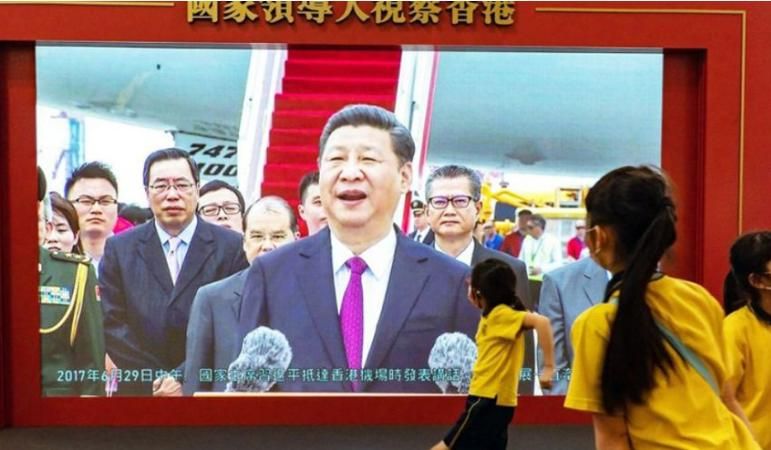
From Size to Scale
Not every large
country becomes a great power. Size refers to dimensions; scale is the ability
to use size to generate efficiency and productivity and thereby outcompete
rivals. Small states can become world-class by maximizing efficiency on a small
foundation, but when large states run that playbook on a much larger
foundation, they can remake the world. Broader internal markets can drive down
costs, enabling companies to outcompete others around the world. Bigger
populations create deeper pools of talent and research. Large states are less
reliant on trade, which gives them greater resilience. And they can field
larger militaries.
Small states have
risen to power on first-mover advantages, often with the acquiescence or benign
neglect of larger states. In the eighteenth and nineteenth centuries, the
United Kingdom was able to dominate the world with a first-mover advantage in
industrialization. But that dominance was short-lived. Germany and the United
States—thanks in part to the diffusion of British industrial methods—were able
to achieve greater scale than a small island in the northwest corner of Europe.
From 1870 to 1910, the British share of global manufacturing fell by half as
the United States and Germany caught up and surpassed it. While the United
Kingdom’s steel production doubled, to 6.5 million tons, Germany’s quintupled,
to 12 million, and the United States’ grew sixfold, to 23 million. Germany and
the United States pushed the British out of major industries, leveraging their
larger internal markets, resource bases, and talent pools to drive down
marginal costs. That economic advantage translated into still greater military
and technological advantage. Together, these trends led to the United Kingdom’s
gradual deindustrialization and eventual decline.
British leaders and
strategists were aware of the problem. In the late nineteenth century, the
British historian John Robert Seeley, in one of the most influential books of
the era, worried about the emergence of “highly organized states on a yet
larger scale,” noting that as technology diffused, “Russia and the United
States will surpass in power the states now called great as much as the great
country-states of the sixteenth century surpassed Florence.” Even before the
collapse of the British Empire, he feared that the United Kingdom would be
reduced “to the level of a purely European Power” such as Spain. Seeley was not
alone in calling for his country to pursue the kind of scale and efficiency
gains an island could not generate on its own, through “Greater
Britain”—tighter integration with imperial holdings in Canada, Australia, New
Zealand, and southern Africa. But these efforts were delayed, inconsistently
pursued, and ultimately a failure. The colonies went their own way, and the
British never found scale.
When World War I
broke out, London was fortunate to have a much more powerful ally in
Washington—one with the scale to help win World War I. That scale was clear to
rivals. Before the war, Hitler had observed that “The American Union . . . has
created a power factor of such dimensions that it threatens to overthrow all
previous state power rankings.” Japanese Admiral Isoroku Yamamoto predicted
that his country’s forces would “run wild for the first six months or a year,
but I have utterly no confidence for the second and third years” because of the
United States’ manufacturing advantage. Italy’s foreign minister also
recognized that a protracted war favored the United States: “Who will have the
most stamina? This is the way the question should be put.” All the Axis powers
feared U.S. industrial capacity. They understood that quantity was a quality of
its own.
Today, that daunting
scale and capacity belongs to China. American strategists must confront the
risk that the United States could find itself in the position of the United
Kingdom a century ago. The British experience offers both lessons and warnings:
its effort at imperial integration was too little and too late. But the United
States today can succeed where Britain failed by harnessing allied and partner
scale in new ways.
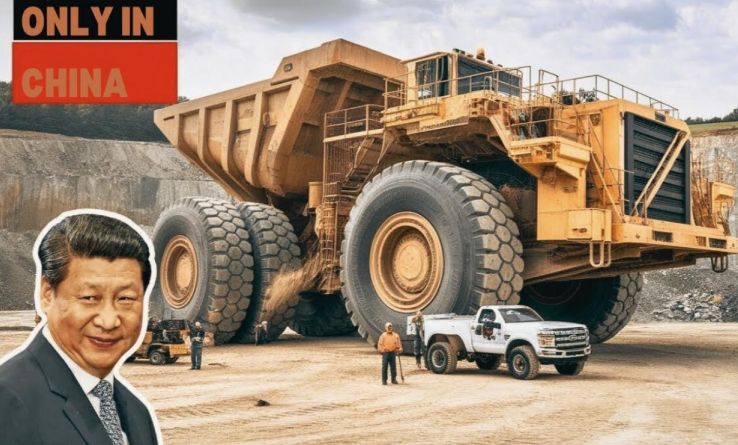
Rise and Fall and Rise
The starting point
for that success must be accurate self-assessment. Michael
Beckley argues that “the Chinese economy is shrinking relative to
that of the United States” and that “current trends are solidifying a unipolar
world.” Stephen Brooks and Ben Vagle claim that “the United States
still has a commanding and durable advantage” that would give it significant
economic leverage in a conflict. Jude Blanchette and Ryan
Hass conclude that “the United States still has a vital edge over
China in terms of economic dynamism, global influence, and technological
innovation.”
Predicting the rise
or fall of great powers is always a fraught exercise, given inadequate
information, the risks of bias, the long shadow of current events, and the
challenge of sorting out which metrics matter most and in what time frame.
American strategists previously swung from one extreme to another in their
estimation of Japan and the Soviet Union. That same weakness has characterized
net assessment of China and the United States.
There is no question
that China faces significant problems: an aging society, towering debt,
stagnating productivity, growing risks in its housing market, high youth
unemployment, crackdowns on the private sector. But even grave macroeconomic
challenges do not neatly translate to strategic disadvantage. Two facts can be
true at the same time: that China is slowing economically and that it is
becoming more formidable strategically. And Beijing might well address economic
challenges with a return to sound decision-making in the years ahead.
Emphasizing China’s weaknesses risks understating its scale and capacity on the
metrics and time frame most relevant for great-power competition.
For example, the idea
that the United States’ economy will remain larger than China’s—contrary to
most expectations just a few years ago—is frequently offered as evidence of
commanding U.S. advantage. But as the economist Noah Smith argues in his
analysis of these GDP comparisons, “Americans should take little comfort in the
fact that their total GDP at market exchange rates is outpacing China’s.” As
exchange rates shift, so do comparisons of relative size, so that a 15 percent
depreciation of the renminbi—as has occurred since its peak three years
ago—would make the Chinese economy seem 15 percent smaller even if its output
stayed the same. Accounting for purchasing power and local prices using the
World Bank’s methodology, although imperfect, reveals instead that China’s
economy surpassed the U.S. economy about a decade ago and is 25 percent larger
today: roughly $30 trillion to the United States’ $24 trillion. This purchasing
power adjustment captures the real cost of the determinants of national power,
including infrastructure investment, weapons systems, manufactured goods, and
government personnel—key factors in sustaining long-term strategic advantage.

Using this approach,
if one looks narrowly at goods rather than services, China’s productive
capacity is three times as large as that of the United States—a decisive
advantage in military and technological competition—and exceeds that of the
next nine countries combined. In the two decades after China joined the World
Trade Organization, its share of global manufacturing quintupled to 30 percent
while the U.S. share halved to roughly 15 percent; the United Nations has
estimated that, by 2030, the imbalance will grow to 45 percent and 11 percent.
China leads in many traditional industries—producing 20 times as much cement,
13 times as much steel, three times as many cars, and twice as much power as
the United States—and increasingly in advanced sectors as well.
Although still
catching up in fields such as biotechnology and aviation, which have been
traditional U.S. strengths, China—thanks in part to ambitious industrial policy
efforts such as Made in China 2025—produced almost half the world’s chemicals,
half the world’s ships, more than two-thirds of electric vehicles, more than
three-quarters of electric batteries, 80 percent of consumer drones, and 90
percent of solar panels and critical refined rare-earth minerals. And Beijing
is taking steps to ensure its dominance continues and expands: China was
responsible for half of all industrial robot installations worldwide (seven
times as many as the United States), and it is a decade ahead of anyone else in
commercializing fourth-generation nuclear technology, with plans to build over
100 reactors in 20 years. The last great power to so thoroughly dominate global
production was the United States, from the 1870s to the 1940s.
American observers
tend to underestimate China’s ability to innovate, mistakenly assuming it
simply copies and reproduces Western innovations. Like the United Kingdom,
Germany, Japan, and the United States before it, China’s manufacturing strength
creates a foundation for innovative advantage. State investment helps, too; it
now rivals the United States’ investment in science. And China’s large
population provides a deep talent pool and competitive scale. In ten industries
of the future, according to a recent report from the Information Technology and
Industry Foundation, China is near the leading edge of innovation (or better)
in six.
This industrial and
innovative strength can be activated for military purposes. China’s navy,
already the largest in the world, will add a staggering 65 vessels in just five
years, reaching a total size 50 percent larger than the U.S. Navy—roughly 435
vessels to 300. It has rapidly increased its ships’ firepower, surging from
one-tenth of the United States’ vertical launch system cells a decade ago to
likely exceeding U.S. capacity by 2027. Although China lags the United States
in aviation, it has broken a long-standing technical barrier by building jet
engines at home and is now rapidly closing the production gap, with the ability
to build more than 100 fourth-generation combat aircraft annually. In most
missile technologies, China is probably the world’s leader: it boasts the first
antiship ballistic missile, impressive air-to-air missile range, and the
largest stockpile of conventional cruise and ballistic missiles. And in a
growing number of military fields, from quantum communications to hypersonics, China is ahead of any competitor. These
advantages, built over decades, will persist even if China stagnates.
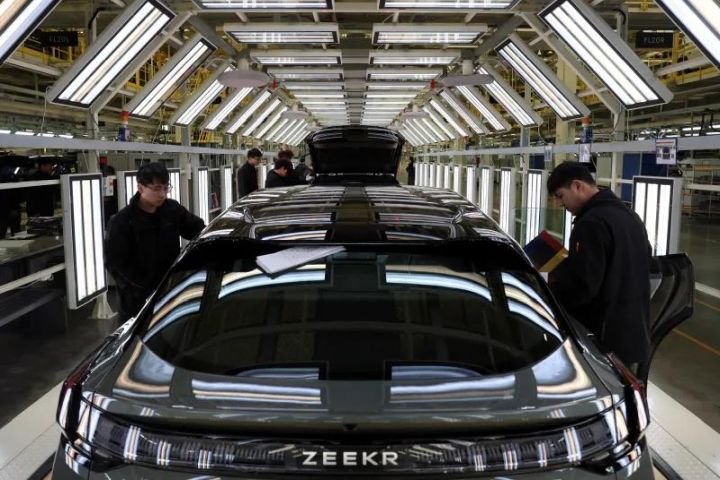
An electric vehicle factory in Zhejiang Province,
China, March 2025
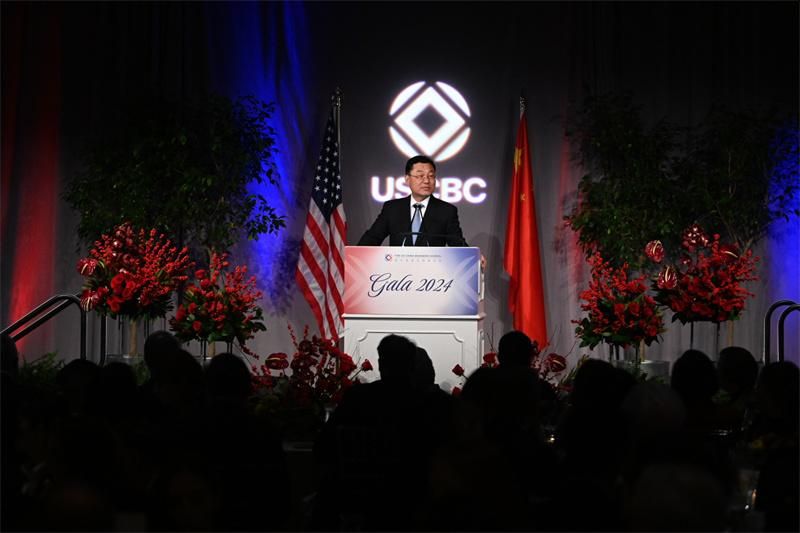
Know Your Rival
China’s challenges
are significant. But their strategic importance is often overstated. For
example, its demographic challenges will be a major issue in the long term, but
in the medium term—a timeline much more relevant to competition with the United
States—they are manageable. A generational “echo boom,” as the grandchildren of
the Mao-era baby boomer generation enter the workforce, means that, despite an
aging population, the percentage of the population below the age of 15 has
actually increased, by over 30 million between the 2010 and 2020 censuses, and
it has also grown as a percentage of the total population. China’s dependency
ratio (of adult workers to children and retirees) will remain below Japan’s
current ratio until 2050. And massive investments in education, industrial
robotics, and embodied artificial intelligence will help China weather labor
shortfalls.
Debt levels are also
illustrative. Although China’s household, corporate, and government debt is at
a record 300 percent of GDP, other powers—including India, Japan, the United
Kingdom, and the United States—have similar levels of total debt. In some cases,
metrics that indicate weakness in one area reflect strategic strengths in
another. China’s housing bust, for example, is a drag on growth. But Beijing is
plowing credit from that sector into industrial policy efforts that are
boosting competitiveness. Similarly, while American firms continue to capture a
higher share of profits and dominate rankings of market capitalization, Chinese
firms are focused on different goals, often running losses to gain market share
and put rivals out of business. Despite short-term challenges, China continues
to play the long game.
Even if its
weaknesses prove more severe than projected, China will remain vastly more
powerful than any past U.S. competitor on the metrics most relevant for
competition. Washington may have overestimated past rivals, including Germany,
Japan, and the Soviet Union. But China is the first to outmatch the United
States in size alone, as well as in several strategically relevant areas.
Stagnant or not, Beijing will remain more formidable than any past challenger.
Some analysts warn
that American declinism is itself a risk, which could
become “a self-fulfilling prophecy.” There is wisdom in that admonition; the
rise and fall of great powers often begins with flawed self-diagnosis. But it
is also the case, as the political scientist Samuel Huntington argued in these
pages before the fall of the Soviet Union, that fretting about decline can just
as often drive renewal. The greatest risk is not declinism;
it is complacency, leading to a lack of strategic intention and a failure to
catalyze collective action to rise to the China challenge. If anything, the
United States—particularly in the era of President Donald Trump—risks
overestimating unilateral power and underestimating China’s ability to counter
it.
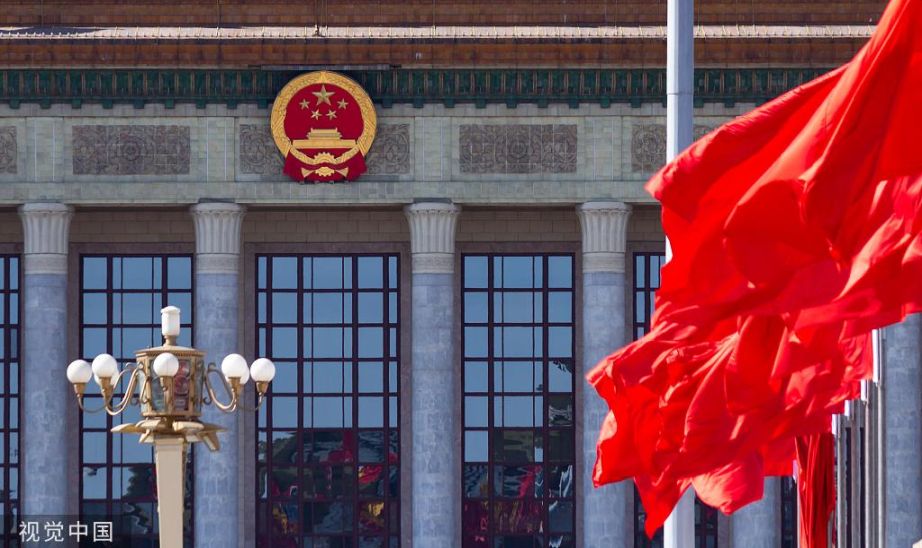
Capacity-Centric Statecraft
For Washington, three
realities must be central to any serious strategy for long-term competition.
First, scale is essential. Second, China’s scale is unlike anything the United
States has ever faced, and Beijing’s challenges will not fundamentally change
that on any relevant timeline. And third, a new approach to alliances is the
only viable way the United States can build sufficient scale of its own.
Altogether, this means that Washington needs its allies and partners in ways
that it did not in the past. They are not tripwires, distant protectorates,
vassals, or markers of status, but providers of capacity needed to achieve
great-power scale. For the first time since the end of World War II, the United
States’ alliances are not about projecting power, but about preserving it.
During the Cold War,
the United States and its allies outclassed the Soviet Union. Today, a slightly
expanded configuration would handily outclass China. Together, Australia,
Canada, India, Japan, Korea, Mexico, New Zealand, the United States, and the European
Union have a combined economy of $60 trillion to China’s $18 trillion, an
amount more than three times as large as China’s at market exchange rates and
still more than twice as large adjusting for purchasing power. It would account
for roughly half of all global manufacturing (to China’s roughly one-third) and
for far more active patents and top-cited journal articles than China does. It
would account for $1.5 trillion in annual defense spending, roughly twice
China’s. And it would displace China as the top trading partner of almost all
states. (China is today the top trading partner of 120 states.)
In raw terms, this
alignment of democracies and market economies outscales
China across nearly every dimension. Yet unless its power is coordinated, its
advantages will remain largely theoretical. Accordingly, unlocking the
potential of this coalition should be the central task of American statecraft
in this century. And that cannot be done by simply doubling down on the
traditional alliance playbook.
The starting point
for the United States can be long-standing bilateral alliances (such as those
with Japan and South Korea) and multilateral alliances (such as NATO), along
with newer partnerships (such as the AUKUS defense technology agreement with
Australia and the United Kingdom) and less institutionalized groupings (such as
the Quad, which also includes Australia, India, and Japan). But rather than
simply celebrating these frameworks or expanding their membership, the task
ahead is to deepen their function—to make them foundations for capacity-centric
statecraft across multiple domains. These relationships have too often operated
on the assumption that the United States provides security while others
contribute political support or, at best, niche capabilities. It has been
largely security-centric, too—focused on deterrence, access, and
reassurance—while leaving economic coordination, industrial integration, and
technological collaboration as emerging but still secondary concerns. The
traditional model was simply not designed to compete with a systemic rival on
the order of China. It is dangerously inadequate to the demands of the moment.
The U.S. approach to
alliances and partnerships in recent decades has been shaped by a combination
of strategic habit and structural hierarchy. Now, it must become a platform for
generating shared capacity across all critical domains—not just military ones.
That will require a level of coordination and codependence that is unfamiliar
and will at times be uncomfortable for both the United States and its partners.
For military power, creating scale requires capacity to flow in both
directions, including investment in the weaker parts of the U.S. defense
industry and more generous provision of advanced U.S. military technologies to
allies who historically have not received it. For the economy, scale means
building a shared tariff and regulatory wall against China’s excess capacity
while constructing new mechanisms to coordinate industrial policy and pool
allied market share. For technology, the challenge will similarly be to erect
common investment rules, export controls, and research protections to prevent technology
transfer to China while undertaking joint investment. These steps mark the
difference between a coalition that is aligned in principle and one that is
fused in practice. That shift—toward shared capacity as the foundation of
strategy—will allow the United States and its partners to compete at scale and
speed.

Scale Both Ways
The Biden
administration used existing security alliances and partnerships to construct a
“latticework” meant to better distribute force posture, increase allied defense
spending, and launch new security arrangements such as AUKUS while elevating
bodies such as the Quad. These efforts should be reinforced, but the next step
is to transform defense-industrial cooperation. The lessons
from Ukraine are clear: The United States would lack sufficient
capacity to sustain a prolonged conflict with China on its own. Although
innovation from new firms in uncrewed systems is promising, true scale,
particularly in legacy systems, will require co-production and deeper
industrial integration with allies. The World War II Arsenal of Democracy is
unlikely to return. In its place, the United States needs to construct what the
historian Arthur Herman has called an Arsenal of Democracies: a
networked defense industrial base built on joint production, shared innovation,
and integrated supply chains.
This marks a sharp
change from the past, when the United States primarily provided capability to
others. Now, scale demands two-way flows, including allied investment and
manufacturing in the United States. Some initial steps the Biden administration
took, such as having the Japanese repair American destroyers, provide a modest
glimpse of what is possible. More ambitious efforts might involve joint
ventures with Japanese and South Korean shipbuilders (which are two to three
times more productive than U.S. firms); partnerships between Europe’s missile
manufacturers and U.S. companies; or recruiting Japanese or Taiwanese firms to
build legacy microelectronics in the United States. Too often, dated regulatory
and political constraints, which must be addressed jointly by Congress and the
executive, create barriers to benefiting from allied capability.
The United States’
own capability must also flow outward to allies. Biden-era efforts such as
AUKUS and the co-production of Tomahawk missiles with Japan are steps in the
right direction. But real progress requires overcoming a bureaucratic alliance
between a State Department concerned about proliferation and a Defense
Department fearful of eroding its edge. Sharing technology quickly is the key
to ensuring that Australia builds nuclear submarines, that Asian allies have
sufficient antiship cruise missiles and ballistic missiles, that Taiwan can
deter Chinese invasion, and that India is able to turn the Andaman Islands to
its east into a fortress that Beijing cannot ignore. In practice, this could
mean harmonizing export-control laws, aligning procurement standards, and
coordinating investment in chokepoint components, from semiconductors to
optical equipment.
Allies can also
transfer capacity to each other, both within regions and between different
ones. Some of this has begun to happen haltingly, but much more is possible.
South Korean weapons can help Europe rearm and reindustrialize. French nuclear
technology can support India’s submarine program. Norwegian and Swedish
missiles can help Indonesia and Thailand defend their waters. Pooling capacity
requires thinking across alliances, with the United States facilitating
collective action.
Tighter integration
also requires more burden sharing—and burden shifting. Even as allies and
partners build bridges across continents, they must also play a bigger role in
deterrence closer to home, with Europeans stepping up in Europe and Asians
stepping up in Asia. That can be done in part by strengthening the security
dimension of increasingly important groupings (the
Quad or the trilateral relationship with Japan and Korea). But Washington
also needs to strengthen coordination with allies for actual
warfighting—through steps such as modernized joint command-and-control systems,
new investments in interoperability, and more sophisticated joint exercises.
That could include creating joint units with U.S. allies and partners, starting
with ground-based antiaircraft and antiship missile battalions to be used in a
crisis in the Indo-Pacific and later extending to more complex air and naval
formations. The United States should also reinforce extended deterrence by
offering allies a greater say in nuclear command and control and the kinds of
nuclear sharing arrangements that it pursued with European allies during the
Cold War.
Globally, the United
States could pursue a new version of U.S. President Richard Nixon’s “Guam
Doctrine,” which devolved responsibilities to partners after the Vietnam War.
That would empower regional states—what former Australian Prime Minister John
Howard called “deputy sheriffs”—to take the lead on security challenges in
their neighborhood: Australia in the Pacific islands, India in South Asia,
Vietnam in continental Southeast Asia, Nigeria in Africa. In practical terms,
the next time a South Asian country faces challenges, the United States would
defer to India’s judgment on what might serve regional stability or counter
China’s influence rather than seek to advance its preferences.
Common Markets
The Biden
administration took important steps in the economic and technology competition
with China, with initiatives such as the U.S.-EU Trade and Technology Council
and the U.S.-India Initiative on Critical and Emerging Technology, and
coordinated semiconductor export controls with Japan and the Netherlands. But
withstanding China’s excess capacity and retaining technological leadership
will require more ambitious action beyond what Washington has typically been
willing to do.
China’s nonmarket
practices and sheer scale have overwhelmed the World Trade Organization and now
pose an existential risk to the industrial base of the United States and its
allies and partners. Attempting to act alone against this threat will mean failure:
securing the U.S. market will do little good if China can still push U.S.
companies out of partner markets, depriving them of the scale they need to
remain competitive. Instead, the United States and its allies and partners must
find scale together, through a defensive moat against Chinese exports. Building
a protected common market could start with coordinated tariffs on Chinese
goods. But because tariffs can be easy to circumvent, a better approach might
be to use coordinated nontariff barriers, including regulatory tools. (The
Biden administration used such barriers against digitally connected vehicles
from China.) Such regulatory measures could be coordinated with partners
relatively quickly and easily.
Another tool is
“preferential plurilateralism”—selectively opening
allied and partner markets while creating higher barriers for Chinese goods.
This approach, broadly supported by figures across the political spectrum, from
Robert Lighthizer, the U.S. trade representative during Trump’s first term, to
prominent Democratic legislators, echoes aspects of the early post–World War II
trading system, which gave preferential treatment to members of the free world
over autocratic rivals. If the era of free trade agreements is over for now,
then sectoral agreements with allies could offer promising avenues for pooling
markets while avoiding political sensitivities.
Coordinated
industrial policy instruments would also be useful, such as a new international
industrial investment bank that would make loans to firms in strategic sectors
to diversify supply chains out of China, especially in key sectors such as
medicine and critical minerals. And coordinated efforts to remove barriers to
allied and partner investment could, for example, allow the bypass of national
security review. Japan, South Korea, and Taiwan have invested heavily in
industrial cooperation with the United States (over $300 billion during the
Biden administration with continued growth under Trump). And despite a tendency
to dismiss Europe as economically stagnant, it outproduces the United States in
steel, cars, ships, and civil aircraft; claims a greater share of global
manufacturing; and has a manufacturing workforce three times the size of that
of the United States. Meanwhile, stronger connections between scientific
ecosystems—with more cooperation and people-to-people ties, along with common
research protections—will help ensure that U.S. allies and partners can match
China’s scale.
Pooled market share
would also create strategic leverage. A collective framework for economic
defense—what some have called an “economic Article 5,” drawing on NATO’s mutual
defense clause—is a long-overdue response to China’s economic coercion. Such an
agreement would trigger coordinated sanctions, export controls, or trade action
if one of the group’s members encountered economic pressure from Beijing. It
would also function as a platform for deterring military aggression.
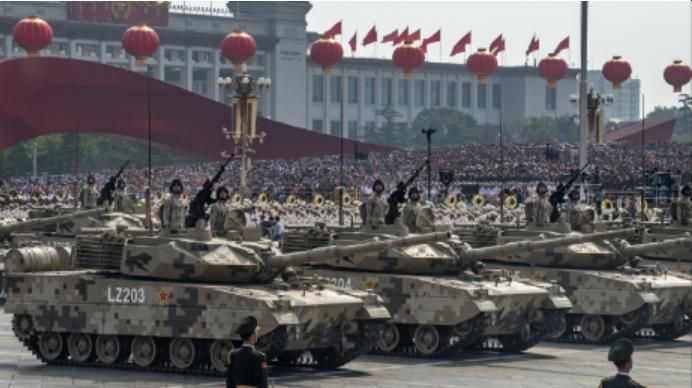
Exit or Loyalty?
Trump has presented
the United States’ partners with hard choices and outright threats. Many may
understandably be loath to further tie themselves to Washington any time soon.
Trust, built over generations, is easily squandered.
Great powers often
overestimate their influence over others. Soviet Premier Mikhail Gorbachev did
not believe his experiments in regional autonomy would result in the exit of
Soviet republics from the Soviet Union. The Trump administration may not expect
its belittling and coercion of allies to lead to a “Gorbachev moment,” but key
U.S. allies are already considering declaring “independence” from
Washington—pursuing nuclear weapons, building new regional groupings, and
challenging the dollar’s role. Some, spurred by domestic reactions to U.S.
pressure, are contemplating moving closer to China, even at enormous peril to
their industries or security. The United States risks fracturing the free world
and closing its best path to scale.
Yet as Washington turns
away from its coalition, China is constructing its own. Driven together by
anti-Western grievance and their parochial interests, China, Iran, North Korea,
and Russia are creating a substantial authoritarian scale. China has built
Russia’s defense industrial base, helped Iran provide Russia with one-way
attack uncrewed aerial vehicles, and assented as North Korea has sent troops to
fight in Europe. All four governments are working to erode U.S. sanctions and
are engaged in diplomatic coordination, intelligence sharing, and military
exercises. This is a unified challenge that requires a unified response.

As some in the United
States talk about creating divisions among China’s partners by executing a
“reverse Kissinger” with Russia, Beijing is determined to exploit fissures in
Western alliances, notably between the United States and Europe. The risk now is
that Washington will split from Europe while failing to split China and Russia.
Efforts to build democratic capacity have been aided by China’s own missteps in
conducting confrontational “wolf warrior” diplomacy; the United States is now
engaged in counterproductive diplomatic pugilism of its own, providing openings
for China to play the role of reasonable partner. Washington will have better
luck partnering with allies than with adversaries animated by deep anti-U.S.
sentiment.
If the United States
fails to pursue scale with others or retreats to the Western hemisphere while
undoing its alliances, the contest for the next century will be China’s to
lose. The United States, like the United Kingdom before it, will find itself
diminished by a great power with unprecedented scale. It will encounter a world
divided among multiple great powers, but with China the strongest among them
and in some areas stronger than all of them. The result will be a United States
that is weaker, poorer, and less influential—and a world in which China sets
the rules.
Although a growing
consensus has swung toward underestimating China’s power and overstating
America’s resurgence, that thinking echoes past cycles of misjudgment. Rosy
perspectives on America’s trajectory risk fueling the kind of go-it-alone
unilateralism that assumes, implicitly and increasingly explicitly, that
American allies and partners are obsolete or overvalued when they are, in fact,
the only path to scale against a formidable competitor. Success requires going
much further and with greater ambition than the alliance-friendly policies of
the previous Biden administration and rejecting outright the alienating,
go-it-alone “America first” approach taking shape under Trump.
Such a commitment is
not just a policy but a signal of the capabilities of the United States, its
allies, and its partners. The Chinese Communist Party is inordinately focused
on perceptions of American power, and a critical input in that equation is its
estimation of Washington’s ability to pull in the allies and partners that even
Beijing openly admits are the United States’ greatest advantage. Accordingly,
the most effective U.S. strategy—the one that has most unsettled Beijing in
recent years and can deter its adventurism in the future—is to build new,
enduring, and robust capacities with these states. A sustained, bipartisan
commitment to an upgraded alliance network, coupled with strategic cooperation
in emerging fields, offers the best path forward to finding scale against the
most formidable competitor the United States has ever encountered.
For updates click hompage here